Orchids, with their exquisite beauty and diverse forms, have captivated human imagination for centuries. While many orchid species are well-known for their elegance and fragrance, some stand out for their extraordinary characteristics and peculiarities. In this article, we embark on a journey to explore the top 10 most unusual orchids, each boasting distinctive features that set them apart in the botanical realm.
Top 10 Most Unusual Orchids
1. Dracula simia: The Monkey Face Orchid
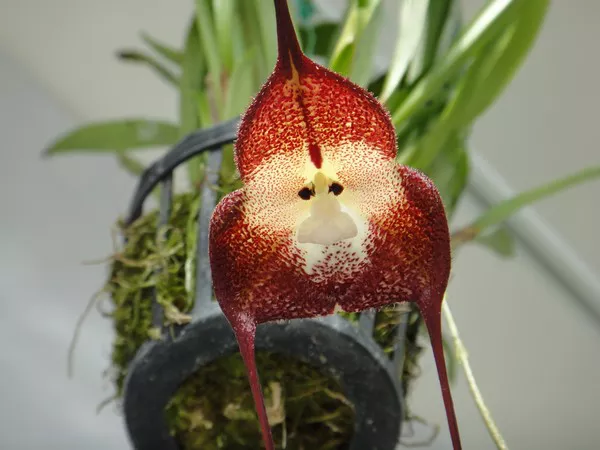
Dracula simia, aptly named the monkey face orchid, is a species native to the cloud forests of Ecuador and Peru. What makes this orchid truly remarkable is its flowers, which bear an uncanny resemblance to the face of a monkey.
Unique Features: The flowers of Dracula simia have a distinctive appearance, with petals and sepals arranged to mimic the facial features of a monkey. This peculiar resemblance has earned it widespread recognition and popularity among orchid enthusiasts.
Ecological Significance: While its unique appearance may seem whimsical, Dracula simia plays a crucial role in its ecosystem as a pollinator attractor, ensuring its continued reproduction and survival in the cloud forest habitat.
See Also: Top 10 Most Fragrant Cattleya Orchids
2. Catasetum: The Explosive Orchid
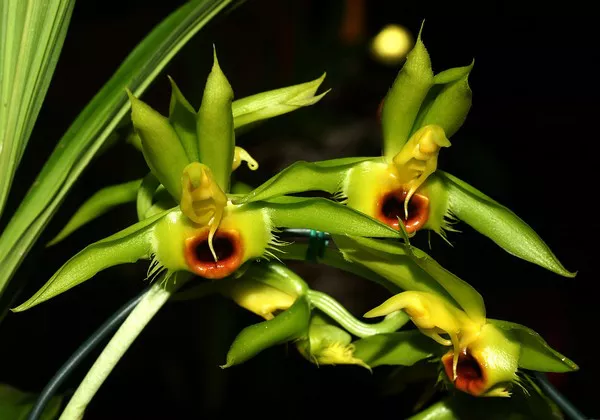
Catasetum orchids, native to Central and South America, are known for their explosive pollination mechanism. These orchids have developed a fascinating adaptation to ensure successful pollination.
Unique Features: Catasetum orchids possess specialized male and female flowers. The male flowers produce a sticky, viscous substance that can be catapulted up to several feet when triggered by a pollinator. This mechanism ensures that the pollinator comes into contact with the pollen, facilitating cross-pollination.
Ecological Significance: The explosive pollination mechanism of Catasetum orchids illustrates the intricate coevolutionary relationships between orchids and their pollinators, which often include bees and other insects.
3. Bulbophyllum nocturnum: The Night-Blooming Orchid
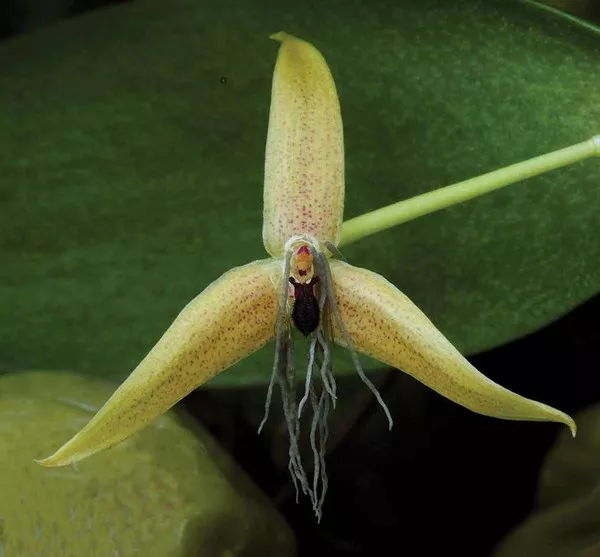
Bulbophyllum nocturnum is a rare species of orchid discovered in Papua New Guinea in 2017. What makes this orchid unique is its nocturnal blooming habit, a rarity among orchids.
Unique Features: Unlike most orchids that bloom during the day, Bulbophyllum nocturnum flowers open at night and remain open until the early morning hours. This adaptation is thought to attract specific nocturnal pollinators, such as moths or night-flying insects.
Ecological Significance: The nocturnal blooming strategy of Bulbophyllum nocturnum highlights the diverse ways in which orchids have evolved to attract pollinators and ensure reproductive success in their respective habitats.
4. Ophrys insectifera: The Fly Orchid
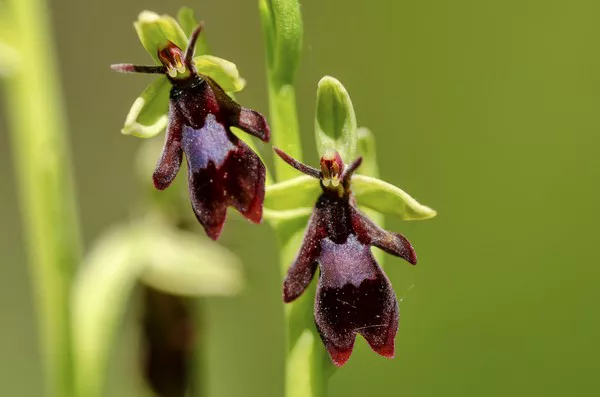
Ophrys insectifera, commonly known as the fly orchid, is a species native to Europe and the Mediterranean region. This orchid is renowned for its remarkable mimicry of a female insect, which serves as a deceptive strategy to attract male pollinators.
Unique Features: The flowers of Ophrys insectifera closely resemble the appearance and scent of female insects, particularly solitary bees or wasps. Male insects are attracted to the flowers, attempting to mate with them and inadvertently pollinating the orchids in the process.
Ecological Significance: The fly orchid’s mimicry adaptation demonstrates the intricate interplay between orchids and their pollinators, highlighting the evolutionary strategies that have evolved to ensure reproductive success.
5. Paphiopedilum: The Slipper Orchids

Paphiopedilum, or slipper orchids, are a group of orchids known for their distinctive pouch-shaped lip. These orchids, native to Asia and the Pacific Islands, exhibit unique floral morphology and specialized pollination mechanisms.
Unique Features: The slipper-shaped lip of Paphiopedilum orchids serves as a trap for pollinators, such as bees or beetles. The insects are lured into the pouch by the promise of nectar but are unable to escape easily, ensuring effective pollination.
Ecological Significance: The specialized floral morphology of slipper orchids illustrates the coevolutionary relationships between orchids and their pollinators, highlighting the intricate adaptations that have evolved over time.
6. Disa uniflora: The Pride of Table Mountain
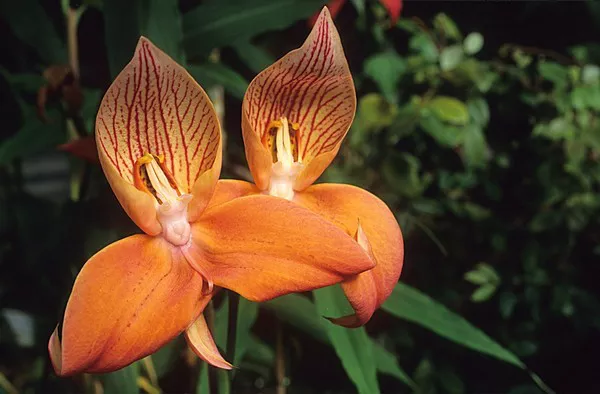
Disa uniflora, also known as the pride of Table Mountain, is a species of orchid endemic to South Africa. What sets this orchid apart is its vibrant red flowers and unique pollination strategy.
Unique Features: Disa uniflora produces stunning red flowers that bloom in dense clusters. The flowers are pollinated by sunbirds, attracted to their bright coloration and nectar-rich rewards.
Ecological Significance: The pride of Table Mountain plays a vital role in the pollination dynamics of its native habitat, providing a food source for sunbirds and contributing to the biodiversity of South African ecosystems.
7. Grammatophyllum speciosum: The Giant Orchid
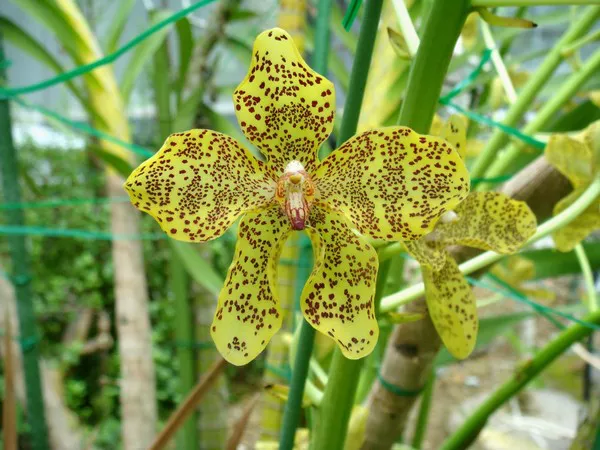
Grammatophyllum speciosum, also known as the giant orchid or tiger orchid, is one of the largest orchid species in the world. Native to Southeast Asia, this orchid boasts impressive size and stature.
Unique Features: Grammatophyllum speciosum can grow to immense proportions, with pseudobulbs reaching several meters in length. The plant produces numerous flower spikes, each adorned with clusters of fragrant, yellow-brown flowers.
Ecological Significance: Despite its size, the giant orchid plays a vital role in its ecosystem as a food source for pollinators, such as bees and butterflies, and as a habitat for epiphytic organisms.
8. Psychotria elata: The Hot Lips Orchid
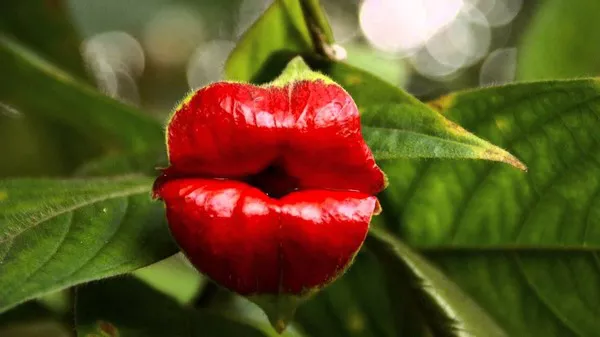
Psychotria elata, commonly known as the hot lips orchid or hooker’s lips, is a species native to the rainforests of Central and South America. What makes this orchid unique is the striking resemblance of its flowers to a pair of bright red lips.
Unique Features: The flowers of Psychotria elata are characterized by their vivid red color and distinctive shape, which closely resembles a pair of luscious, bright red lips. This unusual floral morphology serves as an adaptation to attract pollinators, such as hummingbirds and butterflies, to aid in the orchid’s reproduction.
Ecological Significance: The hot lips orchid plays a vital role in the pollination dynamics of its rainforest habitat. By attracting specific pollinators with its unique floral display, Psychotria elata ensures the transfer of pollen between flowers, contributing to the genetic diversity of the orchid population.
9. Coelogyne pandurata: The Black Orchid
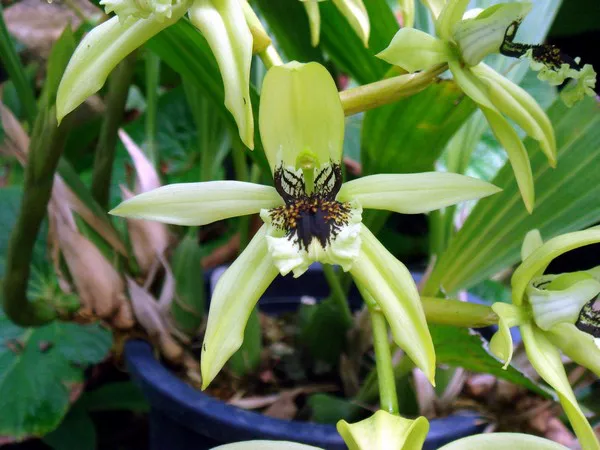
Coelogyne pandurata, commonly known as the black orchid, is a species native to Southeast Asia. Unlike its more vibrantly colored counterparts, this orchid stands out for its deep, dark hue and mysterious allure.
Unique Features: Coelogyne pandurata produces flowers that are almost entirely black, with subtle hints of deep purple or maroon. This unusual coloration sets it apart from other orchids and lends it an air of mystique and sophistication.
Ecological Significance: While the black orchid’s ecological role is similar to that of other Coelogyne species, its distinct coloration may attract specific pollinators or serve as a visual cue for foraging insects in its native habitat.
10. Orchis italica: The Naked Man Orchid
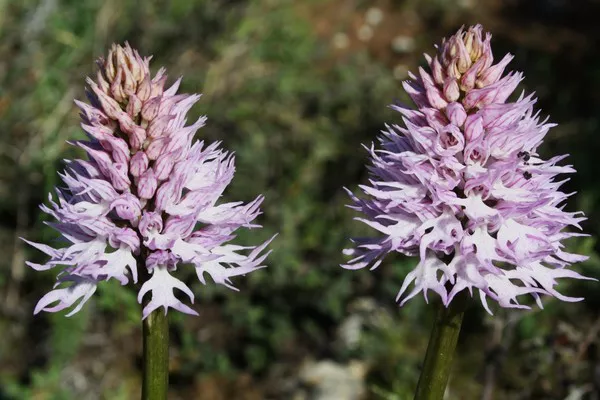
Orchis italica, commonly known as the naked man orchid or Italian man orchid, is a species native to the Mediterranean region. What makes this orchid truly unusual is the striking resemblance of its flowers to miniature human figures.
Unique Features: The flowers of Orchis italica bear a remarkable resemblance to tiny naked men, complete with arms, legs, and torsos. This whimsical floral morphology has earned it widespread attention and fascination among botanists and enthusiasts alike.
Ecological Significance: While the naked man orchid’s peculiar appearance may seem purely ornamental, it serves a functional purpose in attracting pollinators, such as bees and wasps, to facilitate the orchid’s reproduction.
See Also: Bulbophyllum phalaenopsis – The World’s Ugliest Orchid
Conclusion
In conclusion, the top 10 most unusual orchids showcased in this article exemplify the extraordinary diversity and beauty of the orchid family. From the monkey face orchid to the black orchid, each species possesses unique features and adaptations that highlight the ingenuity of nature. By prioritizing conservation efforts and raising awareness about these remarkable plants, we can ensure their continued existence for future generations to marvel at and enjoy.
You Might Be Interested In:



























